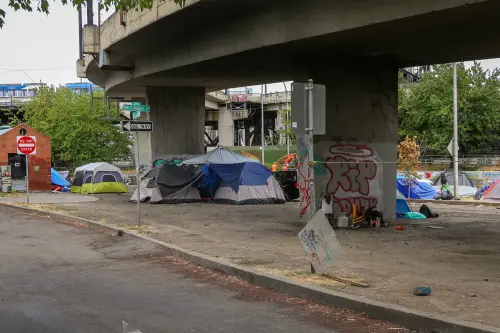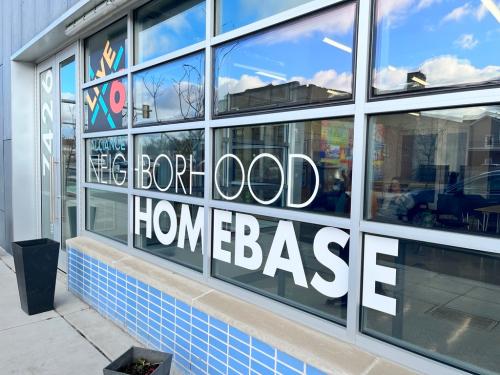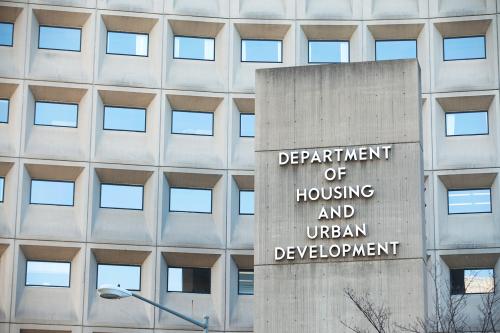The rise in gun homicides in the United States is having reverberating political ramifications at the federal, state, and local levels, with many elected officials falling back into “tough on crime” policies to curb the violence. This punitive turn can be seen in President Joe Biden’s proposed federal budget, in which he calls for “more police officers on the beat” and allocates an additional $30 billion for state and local governments to support law enforcement. Many local leaders are mirroring this approach, centering their gun violence prevention strategies on increasing funding for police and rolling back criminal justice reforms.
What these enforcement-based approaches fail to recognize is that the recent rise in homicides is more nuanced than it appears. Rather than a widespread dispersal of gun violence within cities, the increases in gun homicides are largely concentrated in disinvested and structurally disadvantaged neighborhoods that had high rates of gun violence to begin with. This geographic concentration is a persistent challenge, not a new one—and it requires targeted solutions to improve outcomes in disinvested places rather than reverting to the old “tough on crime” playbook.
This piece takes a deeper look at patterns of gun violence in four cities—Chicago; Nashville, Tenn.; Kansas City, Mo.; and Baltimore—and finds that each city’s gun homicide increases were driven predominantly by increases in neighborhoods where gun violence has long been a persistent fixture of daily life, alongside systemic disinvestment, segregation, and economic inequality. These patterns point to the longer-term need to address the place-based factors that influence violence and invest in the critical community infrastructure that has not only been proven to make communities safer, but can also help them thrive.
National data doesn’t tell the full story about the increase in gun homicides
Between 2019 and 2020, a very specific phenomenon occurred. While homicides rose nearly 30% (driven by gun homicides), overall crime rates declined by 5%. This divergence matters, as experts contend, because homicides and crime usually rise or decline together and, importantly, homicides require different kinds of interventions than other crimes. It is therefore not only incorrect to say we’re in a “crime wave,” but it also obscures the specific challenge at hand: gun homicides.
Moreover, unlike the last major uptick of homicides in 2015 (which was heavily concentrated in a small set of big cities, including Baltimore, Chicago, and Washington, D.C.), this rise is more widespread, affecting small and large cities and blue and red cities and states alike. The seemingly dispersed nature of this rise is fueling fear nationwide, with as many as eight in 10 Americans saying crime is a major problem, ranking it ahead of health care and poverty.
To better understand patterns of rising gun homicides and who this rise primarily impacts, as well as to suggest potential solutions, we selected four cities with varying population sizes, demographics, and murder rates. We then plotted the locations of all gun homicides on a map showing the percentage of households in poverty at the block group level, using data from the 2019 American Community Survey five-year estimates.
Recent increases in gun homicides are highly localized in disinvested areas—as are their cumulative impacts
When we looked more granularly at gun homicides within these cities, we found that the burden of gun violence is unequally shared. Some communities are relatively untouched, while others live under the threat of gun violence on a regular basis, alongside systemic disinvestment, segregation, and economic inequity. Notably, poverty alone was not a predictive factor for high rates of gun homicides, but rather the intersection between poverty, racial segregation, and systemic disinvestment.
In Chicago, for instance, gun homicides in 2019 and 2020 were concentrated in neighborhoods far from the city center that have long suffered from severe disinvestment as a result of white flight, and are now centers of concentrated poverty with predominantly Black residents. As Figure 1 shows, these include neighborhoods in the West Side (including Humboldt Park, Austin, West and East Garfield Park, and North Lawndale areas) along with the South and Southwest Sides. So as Chicago’s murder rate increased by 53% from 2019 to 2020 (from 18.9 homicides per 100,000 residents to 28.9), residents in disinvested areas bore the brunt of this burden, while more affluent areas had near-record low levels of murder.
 Similar trends emerged in Kansas City, which saw its murder rate increase 16% from 2019 to 2020. Our analysis (Figure 2) found that in both years, gun homicides were concentrated in neighborhoods with high levels of concentrated poverty and a history of racist housing policies just east of downtown (Parkview and Lykins), along with a strip of relatively high-poverty neighborhoods (particularly Oak Park and Swope Park) along the US-71 freeway south of downtown.
Similar trends emerged in Kansas City, which saw its murder rate increase 16% from 2019 to 2020. Our analysis (Figure 2) found that in both years, gun homicides were concentrated in neighborhoods with high levels of concentrated poverty and a history of racist housing policies just east of downtown (Parkview and Lykins), along with a strip of relatively high-poverty neighborhoods (particularly Oak Park and Swope Park) along the US-71 freeway south of downtown.
A local analysis by the Missouri Independent found a correlation between high rates of gun violence in these neighborhoods and higher than average eviction rates, which they contend contributed to the increase in murder rates, alongside economic injustice and lack of access to critical community amenities such as food and quality education. As in Chicago, Kansas City had a high murder rate in 2020—30.9 homicides per 100,000 residents—but more affluent areas within the city were largely untouched by gun homicides.
 Baltimore, a city with historically high rates of gun violence, saw its murder rate decline by 3% between 2019 and 2020, from 58.8 homicides per 100,000 residents to 57.3. It was one of 10 majority-Black cities that saw violent crime decline during that period. Even with this decline, however, the pattern of gun violence concentrating in historically disinvested communities holds.
Baltimore, a city with historically high rates of gun violence, saw its murder rate decline by 3% between 2019 and 2020, from 58.8 homicides per 100,000 residents to 57.3. It was one of 10 majority-Black cities that saw violent crime decline during that period. Even with this decline, however, the pattern of gun violence concentrating in historically disinvested communities holds.
As Figure 3 reveals, homicides in both years were most concentrated on the city’s West Side, along the Fulton Avenue corridor—one of the city’s poorest areas, which has been impacted by segregation and systemic disinvestment. Rates were also generally high in other pockets of poverty, such as north of Patterson Park on the East Side, Central Park Heights on the West Side, and the Winston-Govans neighborhood on the city’s northern edge. These areas map on to the city’s well-known “Black Butterfly” of low-income, highly segregated majority-Black neighborhoods on the East and West sides.
 Nashville saw a 36% increase in its murder rate, from 12.5 homicides per 100,000 residents in 2019 to 16.5 in 2020. Our analysis (Figure 4) found that the highest concentrations of gun violence in both years were in high-poverty areas just outside the city’s downtown core: North Nashville and the East Bank, which was the heart of Black Nashville before urban renewal and freeway construction destroyed it. In contrast to these highly segregated neighborhoods with generational poverty, gun homicides are not elevated in the Nolensville Pike neighborhood—which has a high poverty rate but much more economic and racial diversity, with a large population of middle-class immigrants. These trends reflect the enduring relationship between racial segregation and higher rates of violence.
Nashville saw a 36% increase in its murder rate, from 12.5 homicides per 100,000 residents in 2019 to 16.5 in 2020. Our analysis (Figure 4) found that the highest concentrations of gun violence in both years were in high-poverty areas just outside the city’s downtown core: North Nashville and the East Bank, which was the heart of Black Nashville before urban renewal and freeway construction destroyed it. In contrast to these highly segregated neighborhoods with generational poverty, gun homicides are not elevated in the Nolensville Pike neighborhood—which has a high poverty rate but much more economic and racial diversity, with a large population of middle-class immigrants. These trends reflect the enduring relationship between racial segregation and higher rates of violence.
 To combat gun violence, invest in the community infrastructure that keeps neighborhoods safe
To combat gun violence, invest in the community infrastructure that keeps neighborhoods safe
Even amid yearly fluctuations in crime rates, the intersection between gun violence and systemic disinvestment is clear and persistent. So too is the status quo governmental response of relying on policing to respond to it; as Georgetown University law professor and author Sheryll Cashin aptly put it: “Government does overinvest in Black neighborhoods in one area: punitive practices such as policing, law enforcement and incarceration.”
These reactive approaches for policing the symptoms of segregation and disinvestment distract from the deeply rooted need to invest in the community infrastructure that keeps neighborhoods safe, such as quality housing, youth workforce development and employment programs, green space, and civic and community-based organizations. Luckily, the influx of federal resources flowing into communities from the American Rescue Plan Act and the Infrastructure Investment and Jobs Act offers an unprecedent opportunity to properly invest in disinvested communities and advance the community-based safety alternatives proven to promote a more holistic, life-affirming vision of safety.





Commentary
Mapping gun violence: A closer look at the intersection between place and gun homicides in four cities
April 21, 2022